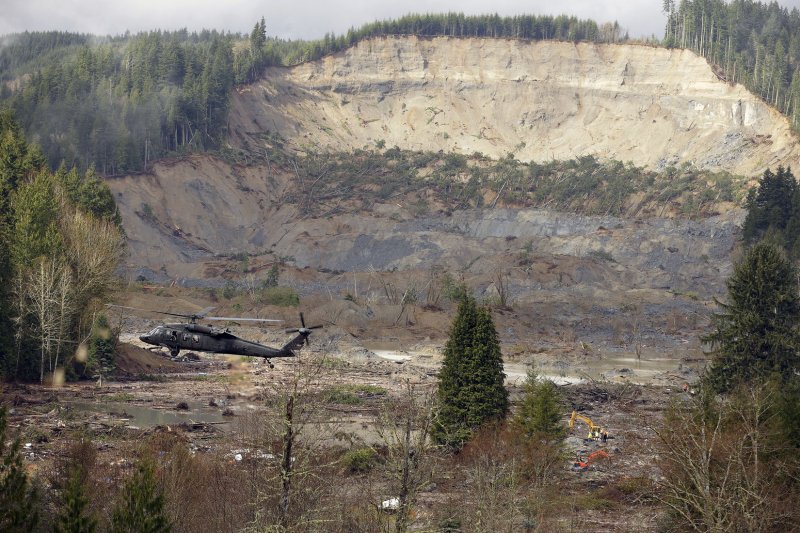EVERETT, Wash., April 8 (UPI) -- As the number of confirmed dead in the Washington mudslide rises, the search for the bodies of the missing is becoming more difficult.
Work began Monday on a berm that will allow the U.S. Army Corps of Engineers to drain a large area. Mike Peele, the agency's team leader at the mudslide site, said construction could take a week.















